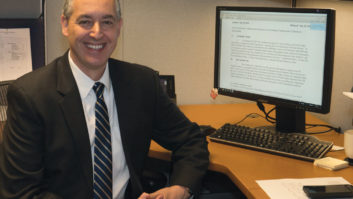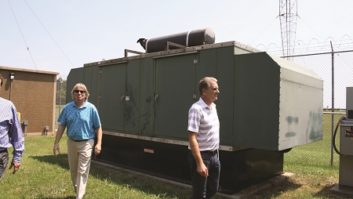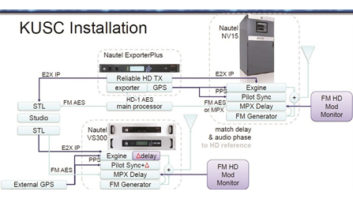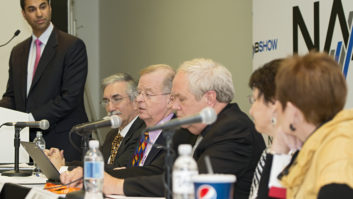
Jørn Jensen OSLO, Norway — What do I mean by the democratization of radio in the headline above? The short answer is — providing the same content to the whole country. Irrelevant of whether a citizen lives in rural or urban settings, they will receive the same number of stations.
For NRK, the Norwegian public broadcaster and my employer, this approach is one of the organization’s key tasks. For commercial broadcasters, it is about providing their audiences with more choice.
So where did we start? The very first radio station on DAB was on air as early as June 1, 1995. From the very beginning of the Norwegian broadcasting industry’s digitization of its services, public and private broadcasters agreed that they should cooperate on technology and compete on content.
COOPERATION
As well as collaborating with each other, the industry also worked with regulators and decision makers on formulating a plan on how to make radio “all digital.” Today, the Norwegian radio industry and stakeholders are able to benefit from this early industry cooperation and agreement on the future of radio broadcasting in Norway.

Norkring owns and operates most of
the transmitter stations in Norway and has
years of experience in building broadcast
networks in challenging topography.
Pictured is the transmitter station in Sogndal.
(Photo: Bo Mathisen. Copyright Norkring AS)
We are now finalizing FM switch-off plans and looking to provide listeners with digital-only sources of radio.Digital radio is defined as DAB, Web radio and radio via the set-top box for digital TV. Listeners may choose to tune in to radio via their smartphones and online, but the majority of digital radio listening remains via DAB/DAB+, which is and will remain, the backbone of radio broadcasting.
NRK built the network up to around 80 percent coverage. In discussing the future of radio with the government, NRK stated that there would be no further extension of the network unless a clear date was set for FM switch-off. As soon as an FM switch-off date was announced, NRK continued with the build-out and worked on reaching its goal of 99.5 percent coverage.
During this time of negotiation, analog TV was replaced by digital TV (analog TV ended on Dec. 1, 2009). Through informing relevant decision makers, the important assessment on the future of radio was undertaken, and Norwegian politicians felt secure in making a decision on the future of Norwegian radio.
Norwegian decision makers saw that DAB/DAB+ is the standard of choice across Europe and Asia-Pacific and in 2011 a report by the Norwegian parliament stated that broadcasters could shut off FM if certain criteria where fulfilled.
FM SWITCH-OFF CRITERIA
1. Coverage (absolute condition for FM shutdown): Before 2015, the public broadcaster NRK must achieve coverage of 99.5 percent, the commercial broadcasters on the national network #1 are required to reach 90 percent of the population.
2. Value added for the listeners (absolute condition for FM shutdown). There must be a value added for the listeners in going from FM to DAB, both in terms of available content and in terms of user experience.
3. Digital listening (condition to be met in order to shut down FM in 2017. Failure to reach it can postpone the shutdown until 2019). Before 2015 50 percent of the radio listeners must use a digital radio platform daily. This does not specify market share of listening, contrary to the U.K. requirement, only reach. “Digital platform” also includes listening via Internet and via the digital TV network. This condition is set in order to measure the listeners’ independence of the analog FM platform.
4. It has been specified that half of all Norwegian municipalities must be able to offer in-car DAB-adaptor installation.

Norkring is building the world’s most extensive network for digital radio in Norway. Seen here are workers at the Viktjernaasen site.
(Photo: Bo Mathisen. Copyright Norkring AS)
OVERCOMING HURDLES
Every country has different regulation and population structures and the effects of FM switch-off will vary accordingly. For Norway the continuous cost of simulcasting was affecting the services on offer and had financial implications. The financial implications were that parts of the existing FM network were in need of an overhaul. Secondly, NRK could foresee a cost of US $25 million (€18 million) for a DAB network transmitting 14 channels and US $28 million (€20 million) for continuing FM only with three stations.
Even though a decision has been made on FM switch off, Norway still faces challenges. Around 3 million cars are on the road; 2 million of these will have to be fitted with digital radio adaptors before an FM switch-off. Retrofitting these cars is possible and provides manufacturers with business opportunities.
Today NRK is able to provide all of its 14 stations to the whole population and commercial radio is also able to create multiple stations without obligation to create certain content.On an FM license there were obligations to provide cultural, children’s and minority programs.
Also, now they do not need to pay for expensive license fees. Interest among local radio in DAB/DAB+ has also grown. Currently we see a number of local radio stations on air across the 37 local areas. In the future they will be able to utilize the diverse multimedia experience offered by DAB as soon as DAB/DAB+ compatible chips find their way into smartphones and tablets.
Although Norway is a small country, we have set a good framework to follow. With cross-industry collaboration at its core, Norway finds itself as the first country to be able to confidently say we are “radio, all digital.”
Jørn Jensen is chief advisor to the director of distribution at NRK.











